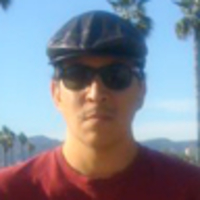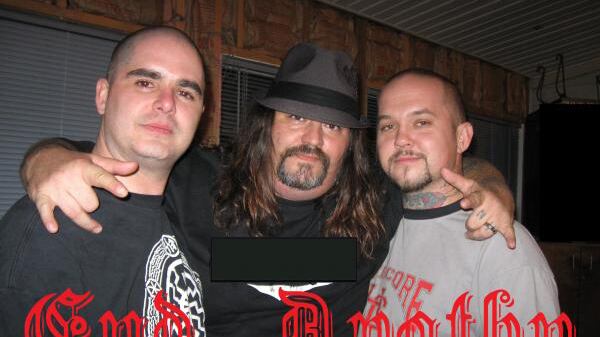
As founding member and bass player for the amateurish groups End Apathy and Definite Hate, Wade Michael Page, the suspected gunman in Sunday’s shooting at a Milwaukee Sikh temple, made little mystery of his association with the so-called hate music scene. Exhibit A of the genre’s disturbing nature: on a hand-drawn cover for Definite Hate’s album Violent Victory, a Caucasian man’s fist, decorated with racist tattoos, is shown making contact with a black man’s face, causing blood to spray from his mouth and dislodging one eye.
In the aftermath of the killing spree, the volume has been turned up on the music scene that appears to have fostered Page’s beliefs, a shadowy corner of the punk-rock universe—also known as white-power music, hatecore, or hate rock—that has existed in semi-obscurity since the ‘80s. The genre promotes a kind of racial apartheid and appeals to a tiny but rage-prone audience that often, in turn, fights viciously within its own community. According to the Anti-Defamation League, hate music stands as “one of the most significant ways neo-Nazis attempt to attract young people into their movement."
The suspected shooter reportedly performed at white power and neo-Nazi skinhead festivals such as 2010’s Independent Artist Uprise Fest in Baltimore and Georgia’s Hammerfest, one of the largest hatecore-skewing festivals in America. Heidi Beirich, Intelligence Project Director for the Southern Poverty Law Center, described the event as “like the Lollapalooza or the Ozzfest of hate.”
“Hammerfest was held for many years at a weird bar in rural Georgia,” she said. “They’d put up a bunch of swastikas, bands would perform and the mosh pit would get very violent.”
With such a narrow appeal and anti-social posturing, hatecore has been confined to the cultural margins, with a dwindling number of distributors for bands and virtually zero support from the mainstream. Still, aficionados of such a white noise, however small they may be in number—estimates suggest only several dozen hate-music groups in existence, and devotees numbering in the thousands—tend to make a visceral impression given their fondness for shaven heads, bomber jackets, and high-rise combat boots. Mosh-pits at live shows are decidedly bloody affairs where punches and kicks rain down, replacing the aggressive yet well-intentioned jostling that accompanies most punk-rock and hardcore gigs.
According to the Southern Poverty Law Center—which has a database of more than 20,000 people the organization has identified as neo-Nazis, white supremacists, and members of other white-power hate groups—Page popped up on the hate music scene in 2000 as a member of the skinhead band Youngland. The doughy guitarist-bassist claimed in a 2010 interview to have filled in on guitar and bass over the years for a number of hate-music outfits including Celtic Warrior, Max Resist, Intimidation One, Aggressive Force, and Blue Eyed Devils—groups partial to a sludgy mélange of punk, heavy metal, British Oi music, and skate rock. The immersion in hate music appears to have influenced Page’s worldview enough to compel him to acquire several large neo-Nazi tattoos.
Beirich says the genre actively encourages hate crimes. “The lyrics tend to be really explicit in urging the commission of acts of violence targeting minorities,” she said. “[The genre] is associated with the most violent part of the white-supremacist movement.”
Indeed, Page laid bare a cruel worldview on such Definite Hate songs as “Madder Than Hell, Meaner Than Shit,” “Unstoppable,” and “Infected World.” And his alleged fatal last act would appear to follow in the failed efforts of another white-supremacist-punk-turned-domestic terrorist, Kevin Harpham.
Harpham, the one-time employee of a neo-Nazi magazine and record company, was foiled in his January 2011 attempt to place a backpack bomb laden with explosives and rat poison at a Martin Luther King Day march. He was sentenced to 32 years in prison last year.
“I hope you’ll pause and reflect and know that we are all inhabitants of one planet,” U.S. District Court Judge Justin Quackenbush said at Harpham’s sentencing. “”It’s not for you or I to decide who lives and who does not live.”






